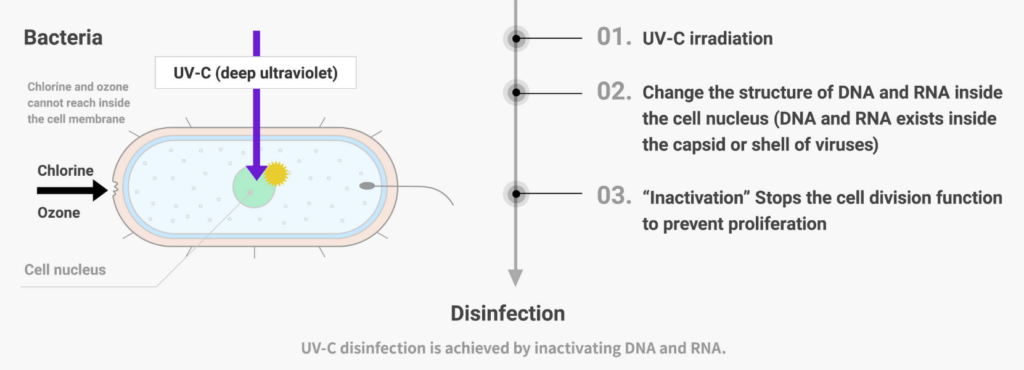
James Prietzel, Product Manager at Intelligent LED Solutions (ILS)
James is the ILS Product Manager for everything related to LEDs and has been with ILS since 2012. James is dedicated to understanding the latest technologies and innovations from leading suppliers in the OptoElectronics world, from optics, to LEDs and to Intelligent LED Drivers.
Ultraviolet light is electromagnetic radiation outside the visible light spectrum. The UV spectrum of 100-400nm is invisible to the human eye and can be separated into categories, each with their own distinct characteristics and applications.
• UVA = 315-400nm. The least dangerous wavelength and the wavelength we receive most strongly from the sun.
• UVB = 280-315nm. Slightly stronger wavelengths received from the sun, which are responsible for vitamin D synthesis and skin burns.
• UVC = 200-280nm. This wavelength is commonly used for disinfection applications.
UVC disinfection differs greatly to other disinfection methods that use heat or chemicals. It has a wide range of applications and has become increasingly popular. Since the coronavirus pandemic hit in 2020, as a society we are more aware of bacteria and more accepting of measures taken to reduce transmission.
| Advantages of UVC disinfection | Risks of UVC disinfection |
| No requirement to wipe and clean the area after use, which is the case with chemical disinfection. | May cause health problems to humans and living things if over-exposed (acute/chronic UV radiation induced damage). |
| Effective against microorganisms which are resistant to chlorine. | May cause discoloration and deterioration of organic materials, typically resin and plastic-based material. |
| Does not lead to creation of bacteria that is resistant to UV. | Places in shadow or where light does not reach cannot be disinfected using this method. |
How does UVC disinfection work?
Bacteria and viruses proliferate, by cell division based on genetic information, to cause infection and illness. DNA and RNA hold the genetic information necessary for this proliferation to occur. Irradiating with UVC changes the helix structure of DNA and RNA of bacteria and viruses which can inactivate these bacteria and viruses resulting in the reduction of their proliferation.

How does the UV wavelength impact disinfection results?
The disinfection effect on DNA and RNA of bacteria and viruses depends greatly on the UV wavelength. Within the UV range, UVC has the shortest wavelength and provides the best performance to inactivate bacteria and viruses. Its effectiveness is more than 1,000 times greater than UVA and over 50 times greater than UVB.

Furthermore, a UVC wavelength of around 265nm provides the highest inactivation efficiency for disinfection.

Effectiveness on COVID-19
Stanley Electric has verified the effect of UV LEDs on coronavirus (SARS-CoV-2). From the results of evaluation tests performed jointly with Yamaguchi University (with Associate Professor Horishi Shimoda, Professor Daisuke Hayasaka, Veterinary Microbiology Department, Joint Veterinary Faculty), Stanley Electric confirmed that UV disinfection is highly effective. When verifying the advantages of each wavelength, they also proved that a 265nm UVC LED has better sterilisation performance over a 280nm UVC LED by a factor of 1.8.

How the UV disinfection effect is calculated
The required irradiation amount and conditions by UV varies depending on the targeted type of bacteria, virus, or other microorganisms. In general, the disinfection effect is determined by the cumulative light amount (or UV dose) applied which is calculated by knowing the light strength (intensity) and the duration that the UV light is shone onto the object (intensity time). The longer the intensity time, the more the cumulative light amount increases, resulting in a greater disinfection effect. Conversely, a high output UV intensity is required when disinfecting is only possible for a short duration.
How is the cumulative light amount calculated?

Intensity depending on distance
The intensity (light strength) changes depending on the light’s distance from the object. In general, the intensity decreases the further the object is from the light source. Subsequently, the intensity increases the closer the object is to the light source.

Source: https://www.stanley.co.jp/e/product/uvc_product/effect











